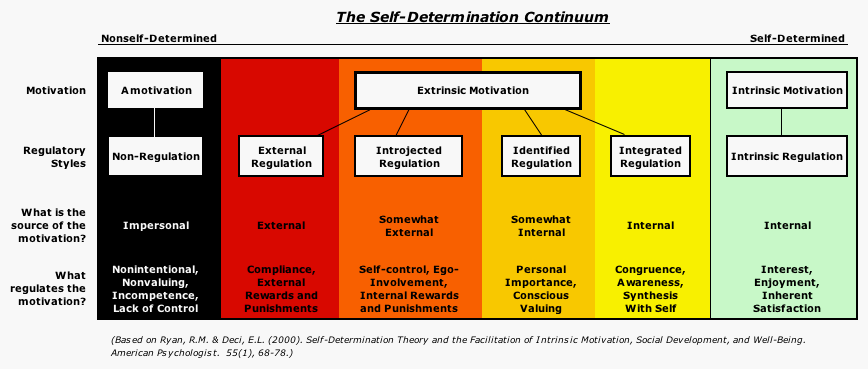The Faces of Motivation And Your Personal Success – Part I
I’m currently reading a home-study course/book on Positive Motivation by Kennon Sheldon, PhD. What’s amazing to me is the more I research and learn about human potential, the more I know I don’t know.
Normally when we think about motivation we think about being excited about doing something or not. Well, if you want to reach your personal goals and achieve personal success on a regular basis, you’re going to have to comprehend and use all aspects of motivation.
An initial question that is applicable for the “positive psychology of motivation” is what can we do to be productive, efficient, effective and happy? Basically, what can we do be able to reach personal success and feel good about it? Our lives are filled with a never-ending variety of things to do and experience. To the greater extend we create these choices of experiences. So the question is, how can we, through our motivated behavior, create experiences that are happy, fulfilling, and productive as possible?
Over the next couple of weeks I plan on highlight the key aspects that I discovered. I hope that this will assist you in taking control of your motivation so that you can reach your peak personal potential and personal success.
There are four aspects associated with motivation – the whether, what, why, and how of motivation
The Four Questions of Motivation:
- To what degree are you motivated to act, expend effort, or other resources in pursuit of a goal? Decide whether or not you are motivated.
- What is it you are motivated to pursue? What is your goal or desired outcome?
- Why are you pursuing this goal?
- How will you achieve your goal?
Understanding the “Why” and “What” of Motivation – An Introduction to Self-Determination Theory
According to Wikipedia Self-determination theory (SDT) Self-determination theory (“SDT”) is a macro theory of human motivation and personality, concerning people’s inherent growth tendencies and their innate psychological needs. It is concerned with the motivation behind the choices that people make without any external influence and interference. SDT focuses on the degree to which an individual’s behavior is self-motivated and self-determined.
The SDT approach to motivation, pioneered by psychologists Ed Deci and Rich Ryan, is centrally about the “what” and “why” of motivation, supplying powerful concepts for understanding positive (and not-so-positive) motivation.
Two types of “positive” motivation based on SDT are intrinsic and identified motivation.
The Significance of Intrinsic Motivation
SDT is built on the concept of intrinsic motivation, that is, the want to do something just for the experience itself. Intrinsic motivation is everywhere – it is seen when people are doing a jigsaw puzzle, when they are making love, when they are trying to master the art of flower gardening, and when they are absorbed in a fascinating work project.
Intrinsic motivation is present in babies just learning about the world, and provides the impetus for much of people’s cognitive development afterwards; from the teen years through old age. When we are intrinsically motivated we are fully engaged, pushing the limits of our current abilities, and often experiencing states of “flow,” or being the “zone” where we are totally absorbed by optimal challenges (such as learning a new piano piece, mastering a new computer program, or striving for victory in a hard-fought tennis match). Intrinsic motivation is a big part of what makes life worth living!
In light of the benefits intrinsic motivation offers some questions come up.
- Does it matter whether we enjoy our daily activities?
- Should we care if we or our employees are happy at work?
- Does it matter if we are or students thrilled by their homework?
- Does it make a difference if learning to play the piano is a fun self-selected activity, or pushed on us by our parents?
The answers to all these questions are:
YES…It absolutely maters!
The Significance of Identified Motivation
You can’t lose what you never had — so maybe your intrinsic motivation wasn’t undermined in the disliked course, because you never had any in the first place!
Maybe nothing could ever induce you to enjoy opera, ballet, or watching foreign films. Even so, might you at least have come to see the topic’s importance, even if you still didn’t enjoy it? For example, the ballet you originally hated, maybe you began to see the athleticism in it and you started to find how they trained and then incorporated some of their training into your routine.
Maybe you did come to realize that there were aspects of watching ballet that were useful, and found these motivating, even if you never rose to that intrinsic level where the class was inherently fun. This subtle difference represents a whole different type of motivation.
The Dark Sides of Motivation
To keep a “balance” if there are two “positive” types of motivation there are also two “non-positive” types as well. They are external and introjected motivation.
The Problems with External and Introjected Motivation
External motivation is easy to understand: these are the activities you are forced to do, for which you see little value, and are not particularly fun (this should not be confused with external goals which will be disused later). Redundant paperwork, some required trainings at work, attending regular meetings where nothing is ever accomplished – these are just a few of these often aggravating activities that are the products of external motivation.
Introjected motivation is similar, only in this case it is you, yourself, who is doing the requiring, pushing, and guilt-tripping. You can probably call to mind activities that you thought were neither enjoyable nor very valuable, and yet felt you “ought” to do them, or “should” do them. Chances are you dragged yourself off to complete them just the same as if there had been a supervisor, military sergeant, or concerned mother looking over your shoulder. Both of these types of motivation involve some sense of unwillingness, of being controlled by forces one does not fully own and endorse. Introjected motivation is not as problematic as external motivation, because at least we have begun to internalize the motivation into our sense of self.
The Motivation Continuum
The “why” of motivation can be expressed as a continuum, ranging from the “lowest” – amotivation (helplessly going through the motions), next to external motivation (feeling one’s behavior is caused by the environment), then to introjected motivation (feeling one’s behavior is caused by a conflict inside the self) then to identified motivation (feeling one’s behavior is caused by the enthusiastic self) and fianlly to intrinsic motivation (feeling that one’s behavior is caused by the enjoyable nature of the activity itself).
Motives toward the “higher vibration” level (intrinsic) are more internalized than motives to the “lower vibration”, and tend to be more positive and beneficial for peoples’ performance and well-being. Ideally, over time, one will be able to internalize all of one’s motives, so that one feels fully self-determined in whatever one does.
In fact, several published articles show that this tends to happen automatically as we get older – we learn to “own” what we do, and learn how to avoid situations or resist influences that seem to force us to do what we cannot own. This same natural internalization process also occurs in children — studies have shown that teenagers tend to do non-fun behaviors (such as picking up their room) for more internalized reasons (“I do it so I know where my stuff is”), compared to younger children (“I do it because mother will punish me if I don’t).
In addition, there are three “extrinsic” motivations, in which a person acts not for the inherent pleasure of acting, but rather, to get some distinguishable consequence. Also, there is also a distinction between “autonomous” and “controlled” motivations, in which a person does or does not support the behavior. In addition, not all extrinsic motivations are challenging, since identified extrinsic motivation is autonomous and internalized, despite not being enjoyable.
Summary of Motivation Types
- Amotivation – The state of lacking the intention to act. In this state, a person either won’t act at all, or will ‘go through the motions’, lacking any specific purpose or intention.
- External Regulation – Activities are done purely to satisfy some external demand. When doing externally regulated activities, people typically feel controlled or alienated.
- Introjected Regulation – Behaviors are still performed to achieve a reward or avoid a punishment, but these things are internal; for example, to avoid guilt or anxiety, or to boost the ego with pride.
- Identified Regulation – This reflects a conscious valuing of a behavioral goal – they are activities people identify with, that are seen as personally important.
- Integrated Regulation – An identified regulation has been fully integrated into the self. It has been brought into congruence with the other values and needs a person has.
- Intrinsic Motivation – An activity is carried out purely for the inherent satisfaction of doing so.
OK…I hope you find this topic as fascinating as I do and see how the different types of motivation will affect your level of personal success.
Please let me know your thoughts in the comments below
Related articles
- 7 Errors of Intrinsic-Extrinsic Motivation (psychologytoday.com)
- Kristin Neff: The Motivational Power of Self-Compassion (huffingtonpost.com)




